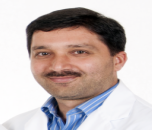
R B Jalili
University of British Columbia, Vancouver, BC, Canada
Title: Application of Adipose Derived Progenitor Cells for Treatment of Chronic Wounds
Biography
Biography: R B Jalili
Abstract
Introduction: Chronic wounds such as diabetic foot ulcers usually fail to progress through the normal wound healing process. Despite widespread effort, current conventional prevention and treatment methods have neither decreased prevalence of these ulcers nor significantly improved their outcomes. This speaks to the need for development of innovative and clinically translatable strategies for treatment of chronic wounds. Stem cell therapy has been examined as a therapeutic approach to chronic wounds throughout the past decade. The use of Adipose derived cells (ADCs) in treatment of chronic wounds has been both promising and practical treatment because of its relatively non-invasive extraction, high proliferation rate, and ability to differentiate into several mesodermal lineages. It has been shown that wounds treated with ADCs applied in the combination of a three-dimensional scaffold exhibit the greatest wound healing outcome.
Methods: In this study, we developed a novel bio-hybrid system comprising an injectable biocompatible crosslinked matrix that is populated with adipose derived cells to form a scaffold within the wound bed. Layers of a nano-woven biopolymer mesh were then served to enhance graft toughness and restore tissue homeostasis ultimately improving the rate of healing of a chronic wound. We compared the viability of adipose derived cells in vitro in combination with and without this bioengineered in-situ forming skin substitute and then applied it in treatment of full-thickness wounds in a pilot murine chronic wound model.
Results: Adipose derived cells (ADCs) exhibited greater viability and functional characteristics when cultured with the bioengineered skin substitute than those cultured alone. Gross wound measurements of the wound treated with combination of ADCs and bioengineered skin substitute exhibited significantly improved wound healing than untreated wounds or those that were treated with ASCs alone. Future research is warranted to examine the promising use of ADCs as treatment for chronic wounds.
Conclusion: Our bottom-up approach will integrate fundamental aspects of biomaterials design with cellular and molecular medicine to innovate an affordable and employable, novel system for the treatment of chronic wounds.
